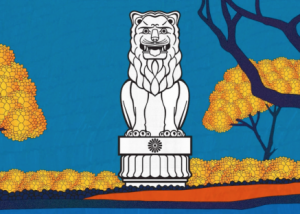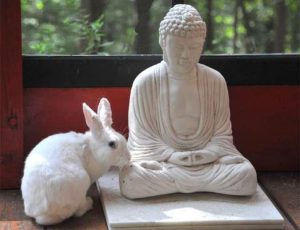
Nepal conducted a formal ceremony on Monday to inaugurate the newly restored Shree Napichandra Mahavihara, a fifth-century Buddhist shrine and monastery, popularly known as Duntu Bahi, in the historic city of Lalitpur in the Kathmandu Valley, some seven kilometers east of the capital city.
Napichandra Mahavihara was severely damaged during the massive earthquakes that rocked Nepal on 25 April and 12 May 2015, killing nearly 9,000 people, injuring more than 21,000, and displacing millions. The devastation also extended to hundreds of ancient buildings, monasteries, and temples.
The inauguration ceremony was led by the mayor of Lalitpur, Chiri Babu Maharjan, and the Indian ambassador to Nepal, Naveen Srivastava. Restoration of the historic site was undertaken at a cost of 38.4 million Nepali rupees (US$288,900), funded by the government of India’s post-earthquake reconstruction grant for Nepal’s cultural heritage sector, and with technical assistance from the Indian National Trust for Art and Culture Heritage (INTACH), local media reports indicated.


During his keynote address at the ceremony, the Indian ambassador emphasized the strong ties and robust cooperation between India and Nepal, noting that the two nations shared historic cultural commonalities and a rich heritage that needed to be protected.
“India and Nepal have historic cultural similarities and heritage that must be preserved for our future generations,” the ambassador noted. “Therefore, it is our common endeavor to restore these heritage sites. India has been working with Nepal for the restoration of cultural heritage projects.” (The Himalayan)
The mayor of Lalitpur expressed gratitude to the ambassador for India’s heritage conservation initiatives in Lalitpur and elsewhere in Nepal. He described India’s assistance for post-earthquake reconstruction efforts in Nepal as incomparable.


India has provided support for the reconstruction of half a dozen heritage sites in Lalitpur that were damaged during the 2015 earthquake, the Deccan Herald newspaper reported. The Indian government has also committed to assist in the conservation of 28 cultural heritage sites across seven districts of Nepal, according to a report in The Himalayan newspaper.
Lalitpur is famed around the world for its remarkable wealth of ancient cultural heritage sites as well as its traditional of arts and crafts that are still practiced today. With a multi-ethnic population of some 300,000 people, of whom 72 per cent are Hindus and 19 per cent are Buddhists, religious and cultural activities make up a significant part of daily life in the city.
Lalitpur was originally laid out in the form of the dharmachakra, the Buddhist Wheel of Dharma, featuring five primary stupas—one at each of the cardinal points and one in the center—said to have been erected by Mauryan emperor Ashoka in 250 BCE. The city is home to the world famous Patan Durbar Square, which was listed as a UNESCO World Heritage Site in 1979, and is one of seven integrated monument zones that make up the Kathmandu Valley World Heritage Site.
Napichandra Mahavihara is located at the north of Patan Durbar Square. Although much of the original structure was destroyed in an earthquake in 1934, the main shrine was rebuilt in the 1980s and the adjoining structure in 2013. The monastery building consists of a sunken central courtyard surrounded by the main shrine building. Under the Indian government’s draft plan for its conservation strategy to restore the monument, it was proposed to reconstruct the shrine building using traditional construction materials and methods.

Although officially a secular nation, Nepal is extremely diverse in terms of religious beliefs and traditions. While a clear majority of Nepali people identify as Hindus (81.2 per cent, according to national census data for 2021), there are a host of other religious adherents. Buddhism accounts for the second-largest segment of the population at 8.2 per cent, Islam accounts for 5.1 percent, Kirat Mundhum 3.2 per cent, and Christianity 1.8 per cent. Nature worship, Bon, Sikhism, and Jainism each come in at well below 1 per cent of the population.
See more
Nepal unveils 5th-century Buddhist Stupa reconstructed with India’s aid (Deccan Herald)
‘India’s aid for rebuilding Nepal’s heritages incomparable’ (The Himalayan)
Conservation of Shree Napichandra Mahavihara, Lalitpur, Nepal (Government of India Funded Restoration of Cultural Heritage Sites in Nepal)
Related news reports from BDG
108 Korean Buddhist Monastics Embark on 1,200-km Pilgrimage in India, Nepal
Polish Buddhist Center Offers Refuge to Nepalis Fleeing Ukraine
Traditional Nepalese Painting Technique Finds New Life in Colorado
Environmentalists Turn Nepal’s Bouddha Stupa Prayer Flags White for the Earth
Nepal’s President Bidya Devi Bhandari Calls on State to Include Buddhist Philosophy and Buddha’s Teachings in Curriculum
Bangladesh Finalizes Agreement to Build Buddhist Monastery in Lumbini, Nepal
Nepal Moves to Rebuild Earthquake-damaged Heritage Sites
Related features from BDG
Journey to the Buddha’s Homeland: Rediscovering Pilgrimage Sites in Nepal
One Year On: Restoring Quake-damaged Heritage Sites in Nepal














